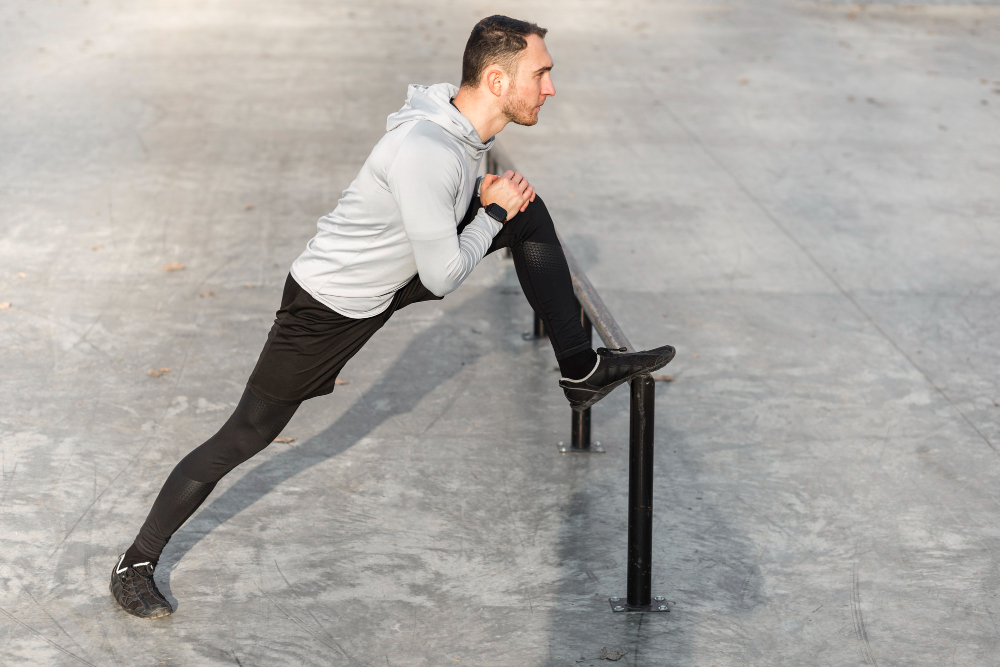Unweighting Gait Training

Unweighting gait training is a therapeutic technique used to assist individuals with walking difficulties by partially supporting their body weight. This method allows patients to practice walking in a controlled, safe environment, reducing the risk of falls and injury. Unweighting gait training is particularly beneficial for those recovering from injuries, surgeries, or neurological conditions. It is often conducted using specialized equipment, such as body weight support systems, treadmills, and harnesses, to provide the necessary support and facilitate proper gait patterns.
Benefits
Improved Gait Mechanics: By reducing the load on the lower limbs, unweighting gait training allows patients to focus on developing correct walking patterns and techniques.
Enhanced Balance and Coordination: The controlled environment of unweighting systems helps patients improve their balance and coordination without the fear of falling.
Accelerated Rehabilitation: This technique can speed up the rehabilitation process by enabling earlier and more intensive walking practice, leading to faster recovery times.
Increased Confidence: Patients often feel more secure and confident while practicing walking with unweighting systems, which can boost their motivation and adherence to therapy.
How It Works
Body Weight Support Systems: These systems use a harness or a series of straps to support a portion of the patient’s body weight. The harness is typically attached to an overhead suspension system or a treadmill.
Adjustable Support: The amount of body weight supported can be adjusted based on the patient’s needs and progress, allowing for gradual increases in weight-bearing as strength and confidence improve.
Gait Training: Patients walk on a treadmill or overground while the unweighting system supports part of their weight. This enables them to practice walking with less effort and strain on their lower limbs.
Applications
Neurological Rehabilitation: Beneficial for individuals with neurological conditions such as stroke, spinal cord injury, multiple sclerosis, and cerebral palsy, helping them regain mobility and independence.
Orthopedic Rehabilitation: Used for patients recovering from orthopedic surgeries, fractures, or joint replacements, promoting early mobility and weight-bearing.
Balance Disorders: Helps individuals with balance disorders or vestibular issues practice walking and improve stability in a safe environment.
Pediatric Rehabilitation: Supports children with developmental delays or congenital conditions in learning and practicing walking skills.
Types of Equipment
Body Weight Support Treadmills: Combine a harness system with a treadmill to provide partial weight support while allowing patients to walk or run.
Overground Systems: Use harnesses and overhead tracks to support patients as they walk on the ground, simulating real-world walking conditions.
Robotic-Assisted Gait Trainers: Incorporate robotic technology to assist with leg movements and provide precise control over the gait training process.
How to Use
Initial Assessment: Conduct a thorough assessment with a physical therapist to determine the appropriate level of weight support and develop a personalized training plan.
Adjust Harness and Support: Fit the patient with the harness and adjust the amount of weight support based on their needs and goals. Ensure the harness is comfortable and secure.
Begin Walking: Start with short sessions, gradually increasing duration and intensity as the patient becomes more comfortable and confident. Focus on proper gait mechanics and posture.
Monitor Progress: Regularly assess the patient’s progress and adjust the level of weight support and training parameters as needed. Provide feedback and encouragement to motivate the patient.
Safety Tips
Proper Fit: Ensure the harness and support system are properly fitted to the patient’s body to prevent discomfort or injury.
Supervision: Always conduct unweighting gait training under the supervision of a trained healthcare professional to ensure safety and effectiveness.
Gradual Progression: Start with lower levels of weight support and gradually increase as the patient’s strength and confidence improve. Avoid overexertion.
Check Equipment: Regularly inspect the unweighting system for any signs of wear or malfunction. Ensure all components are in good working condition before each session.
Unweighting gait training is a valuable method for improving mobility, balance, and confidence in individuals with walking difficulties. By providing partial weight support, it allows for safer and more effective rehabilitation, helping patients regain independence and enhance their quality of life.


